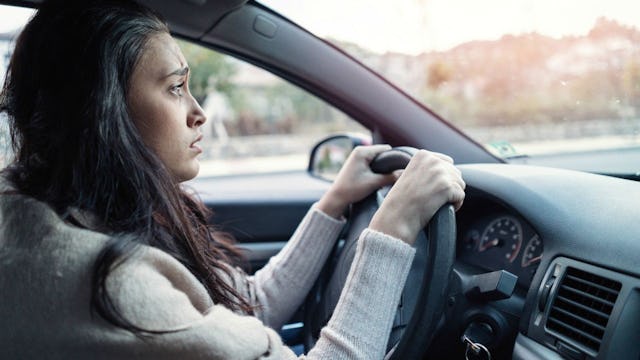Teens Are Being Priced Out Of Getting Their Driver’s License

I got my driver’s license in 1998, which doesn’t sound all that long ago, but turns out I’ve been driving for 20 years now. I know, I know, when I say “driving for 20 years,” it feels like I came to America on the Mayflower. But things have changed a lot since 1998.
Since my high school had a drivers’ education program, I received high school credit for sitting through Coach Lowe’s (our mustached track coach) dry, long-winded, awkward discussions of when to apply the brake and why teen drivers are the most dangerous drivers. I went to school at 6:00 a.m. every day for weeks to sit in a car simulator with a wheel the size of a coffee table, and watch a movie from the 70s that told us when to turn and brake and use our signal. I took the test, and I got my license, and I hit the road, just like all my other friends.
None of that education cost me anything, and it’s good that it didn’t because my parents were divorced and my mother was totally broke. I never — I repeat never — could have afforded drivers’ education without public funding.
Fast forward to 2018, and now it appears that many states are not offering publicly-funded drivers’ education, and it’s kids like my 16-year-old former self who are feeling the pinch. According to Car’s Direct, most driving schools offer an all-inclusive package running between $200 and $800, and while many of you reading this might shrug at the cost, to a low-income family whose primary concern is making rent each month, $800 is about as affordable as a new Lexus.
My first job after graduate school was as an academic counselor for a TRiO Student Support Services Program. This is a federal college program for low-income and first-generation college students. Some people describe it as the social work of higher education, and I remember finding it odd that most of the students I worked with didn’t have a driver’s license yet, despite being college freshmen.
One day I asked one of the students why he didn’t have a license, and he said he’d never had enough money to take drivers’ education. He grew up in a rural town, and the only work he could get was picking fruit with his family. All the money he made went toward rent, food, and other necessities. And even if he did get a license, there was no way for his family to afford insurance for him to drive.
This situation became even more tragic when students I worked with were offered high-quality internships 20 or 30 miles away, but couldn’t accept them because they couldn’t drive or find a public transportation option.
According to a study conducted by the AAA Foundation for Traffic Safety, just over half of teens are licensed before they turn 18. And less than half of teens get a driver’s license within the first 12 months of being eligible. The researchers concluded that “most who delay licensure say this is due to cost, financial constraints, or lack of opportunity.”
What’s more, according to the AAA study, 67 percent of white teens had obtained their license by age 18. Now let’s compare that to teens of color, where only 37 percent of Black teens and 29 percent of Hispanic teens obtained their license by 18. The study also found that teen households with annual incomes greater than $60,000 obtained their licenses at a rate of 60 percent within one year of becoming eligible and 72 percent were licensed before they turned 18.
In comparison, only 16 percent of teens in households with incomes of less than $20,000 were licensed within a year of eligibility, and only 25 percent were licensed before age 18.
I can’t help but think of my younger self when I read this information. I grew up in a farming community in central Utah. Like the student I used to work with, I’d have missed out on multiple opportunities — everything from jobs to attending college — if it weren’t for free drivers’ education.
Pacific Standard magazine put it this way, “The lack of a driver’s license can contribute to already-existing inequities that poor teens and teens of color face.”
To say that the shift from publicly-funded driver’s education is going to hurt low-income teens is a serious understatement. The reality is, this shift will just continue to widen the divide between the rich and the poor, and will continue to do so until changes are made to swing the pendulum back.